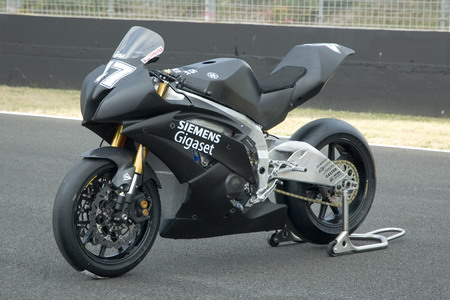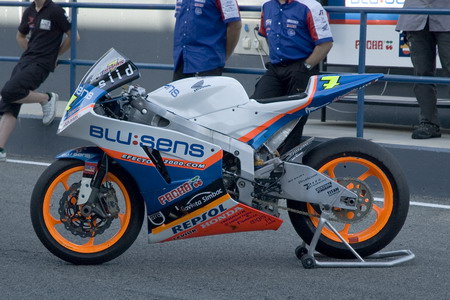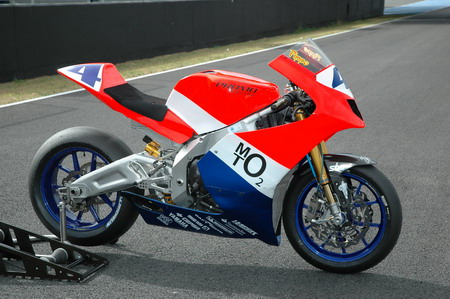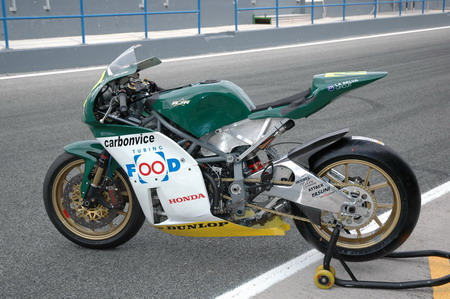Last weekend I was in Jerez, in the second event of the CEV (Road Racing Spanish Championship). The main atracttion was that the moto2 raced for the very fist time, integrated into the Formula Extreme category.
In Jerez we saw 4 moto2, the already known BQR (with Honda engine and chassis made by Kozono in Japan) and the LaGlisse Y2M (with Yamaha R6 engine and Suter chassis) and two new bikes, the Promoracing with Harris chassis and R6 engine and the AJR with Honda engine and trellis frame built by themselves. AJR is a Spanish company that builds classic replicas of the Bultaco TSS racing machines, keeping the old design but using modern materials.
Both Friday and Saturday afternoon, after the trainings the bikes “posed” for the press in the pitlane so it was very easy to take photos.
I will comment some details that took my attention.
The four bikes have much of the fuel located under the seat. In LaGlisse’s bike the fueltank is extended very far to the rear.

BQR: The bike of Jerez had a new fueltank which had much more fuel under the seat. From this bike it caught my attention how massive the chassis looks in the area of the front mounting point of the engine (it can be apreciated only when the bike is without bodywork). This goes against current trend of long and “thin” chassis arms arriving to the front engine mounting points (as we can see in the Yamaha M1, for example).

Promoracing: The chassis has been made by Harris. The central area has been milled from an aluminum block. The front area of the chassis (around the headstock) is formed by aluminum tubes. Rumours said that they made it in this way to be able to modify chassis stiffness if it was necessary.

At first sight this was the bike that looked more compact, I found it the most similar to a 250. The bodywork was really narrow, very close to the chassis and engine. From a front view the bike looked very narrow, so much that maybe the bodywork doesn’t cover the rider in a completely effective way. This is the bike that I liked more of the four, although I find the AJR more interesting from a technical point of view.
AJR: I like the trellis frames because they allow to achieve a good stiffness/weight ratio in an “easy” way. Anyway I prefer those chassis built using only straight tubes, like in the multitubular Cobas or in the most recent Ducati Motogp trellis.
In the AJR the rear part of the chassis (which holds the swingarm pivot point and the rear suspension) is a bolted part, independent of the rest of the structure. In the assembly point of this part with the chassis, there is an eccentric which allows more adjustment possibilities.

In someway it reminds me the Ducati Motogp chassis concept, in which the front and the rear parts of the chassis are independent. In some design ideas for the bottpower moto2 bike we are considering this possibility.
AJR people mentioned that this was the second unit they built. This chasis is an envolution of the first one and they continue developing it. The bike was not 100% finished yet, for example it didn’t have installed the airbox intake conduit.
In the Bottpower Flickr page you will find more photos of these bikes, at higher resolution.